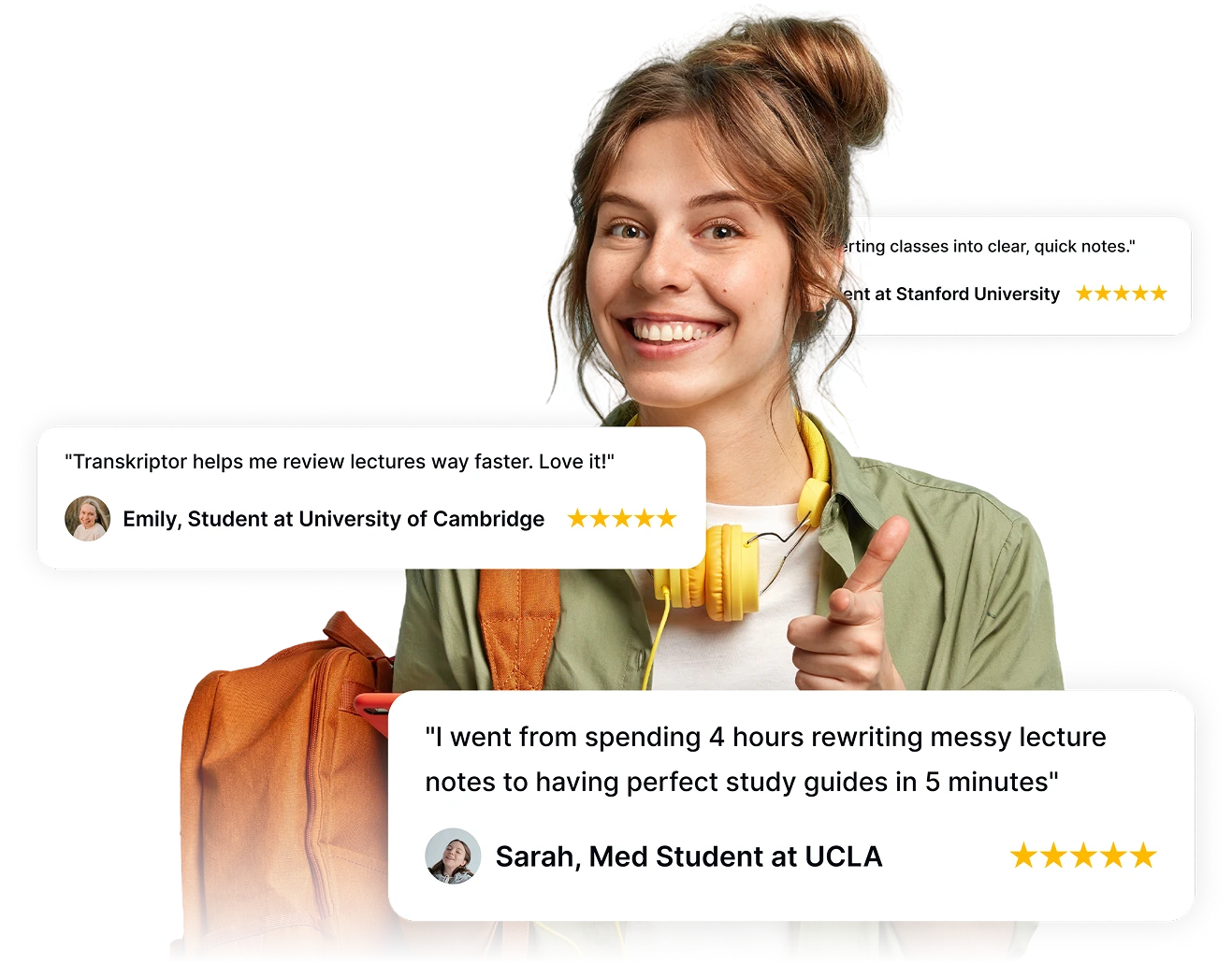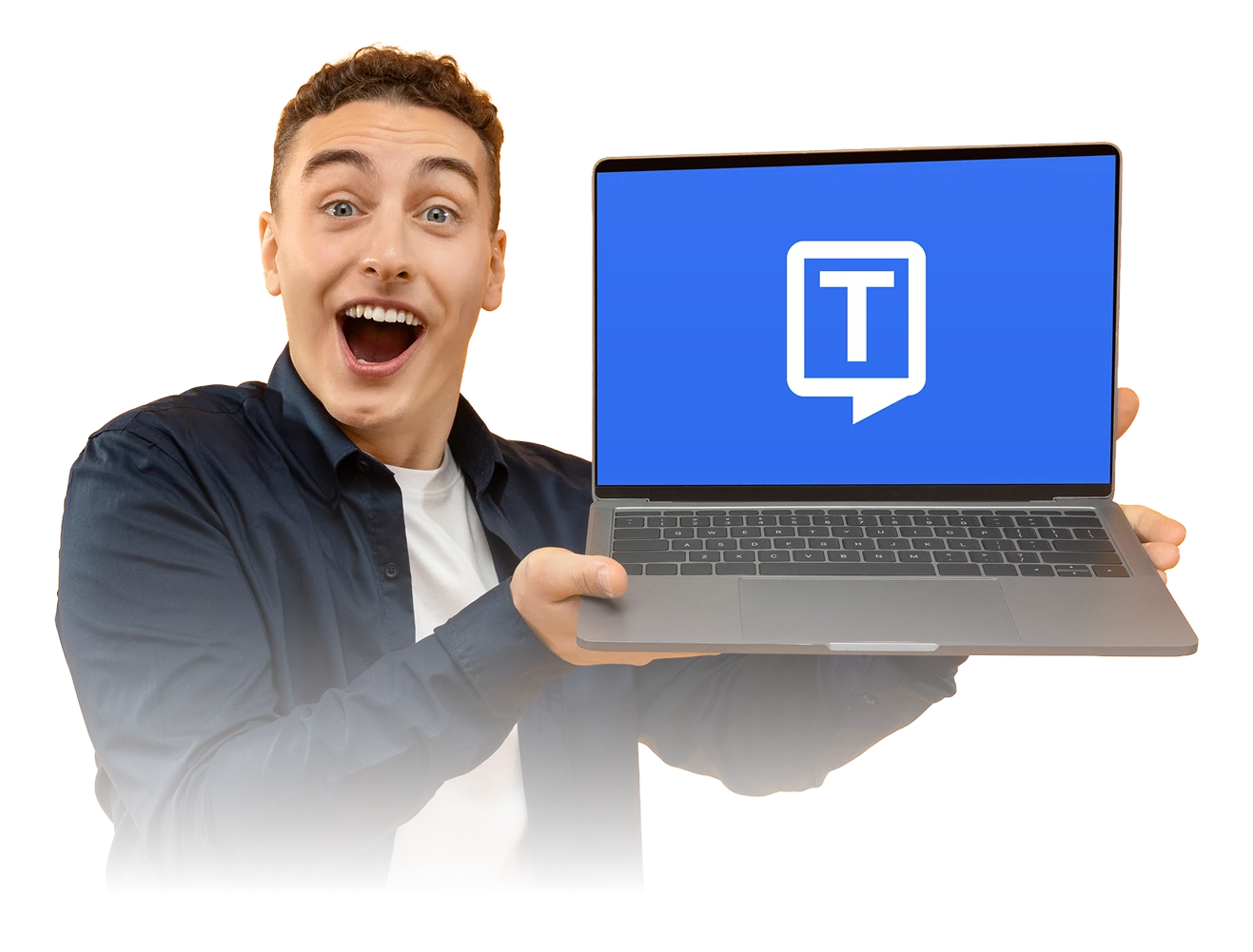Transform Your Study Game
Stop struggling with messy lecture notes and rewriting audio recordings. Transkriptor's AI turns any lecture, interview, or study session into perfect notes in minutes — not hours. Join 100K+ students who've already transformed their study game with 50% off your student plan.
Generate study notes in 100+ languages

Convert Lecture Recording to Text
Click to upload and transcribe for free
Record Lecture and Convert to Text
Trusted by students and instructors at
Transkriptor is Your AI Study Buddy
It's like having a super-smart friend who never misses class and always helps you prepare for exams. Your AI study buddy:
- Never misses a word (99% accuracy)
- Speaks 100+ languages fluently
- Organizes notes perfectly
- Shares with your study group instantly

Turn Your Lecture Recordings Into Study Notes in Minutes
Upload your recording and get organized study notes in minutes. Transkriptor's AI automatically converts your lecture audio into structured notes with headings, bullet points, and highlighted key terms—no manual formatting needed. Here's what you get:
- Clean, organized notes ready for studying
- Important concepts automatically highlighted
- Proper academic formatting applied
- Editable text you can customize further
Chat with Your Transcriptions to Learn Better
Ask questions about confusing concepts and get instant explanations from your lecture content. Transkriptor's AI chat turns your transcriptions into an interactive study partner that helps clarify complex topics and creates practice questions. What you can do:
- Generate practice quizzes from your notes
- Ask questions about confusing lecture concepts
- Get explanations of difficult topics
- Test your understanding before exams
Study Hacks
How to Transcribe Academic Content in 4 Simple Steps?
- 1STEP 1
Upload Lecture Audio
Import recordings from classes, seminars, or research interviews in any format.
- 2STEP 2
AI Transcription
Advanced AI converts speech to text with 99% accuracy for academic content.
- 3STEP 3
Smart Formatting
Automatically structures content into study-ready notes with headers and key points.
- 4STEP 4
Export & Share
Download formatted notes or share with study groups for collaborative learning.
What Students Are Saying About Transkriptor
Frequently Asked Questions
The student plan is available to currently enrolled students at accredited educational institutions. You'll need to verify your student status using a valid student email address.
Yes, Transkriptor supports transcription in over 100 languages, making it ideal for international students and language learners. You can transcribe lectures in virtually any language and even translate transcriptions between languages.
Transkriptor achieves up to 99% accuracy for academic content, including specialized terminology. The system continuously improves through machine learning to better recognize academic language patterns across various fields of study.
Yes, Transkriptor allows you to share transcriptions securely with classmates for collaborative studying. You can control access permissions and even organize shared transcriptions into subject-specific knowledge bases.
Absolutely! Many student researchers use Transkriptor to record and transcribe research interviews. The Insight Tab automatically categorizes responses into themes, making qualitative data analysis much faster for academic papers and dissertations.
Language learners can use Transkriptor to transcribe spoken language lessons, compare pronunciations with accurate text, and practice language skills. The translation feature helps bridge understanding gaps, while the ability to review transcriptions improves vocabulary retention and comprehension.